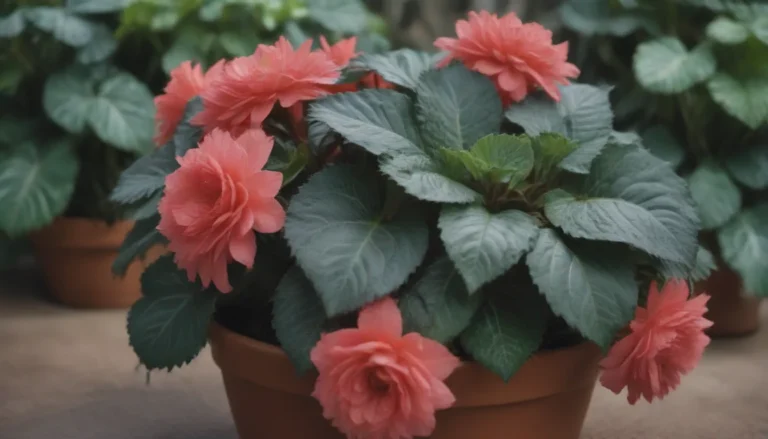A Comprehensive Guide on Growing and Caring for Windmill Palm Trees

Are you an avid gardener looking to add a touch of the tropics to your landscape, even in cooler climates? Look no further than the windmill palm tree, also known as the Chinese fan palm or Chusan palm. This hardy palm tree is one of the rare few that can withstand freezing temperatures down to 10 degrees Fahrenheit. With its unique fan-shaped leaves and elegant appearance, the windmill palm tree is a popular choice for both indoor and outdoor landscaping.
Introduction to Windmill Palm Trees
What is a Windmill Palm Tree?
The windmill palm tree, scientifically known as Trachycarpus fortunei, belongs to the Arecaceae (palm) family. Named after the Scottish horticulturist Robert Fortune, who introduced the plant from China to Europe, the windmill palm tree is a cold-hardy, tropical plant that thrives in USDA zones 7-11. With proper care and maintenance, these palm trees can add a touch of exotic beauty to your surroundings.
Windmill Palm Tree Care Tips
If you’re considering adding a windmill palm tree to your garden or landscape, here are some essential care tips to help you nurture and maintain your palm tree’s health and beauty:
Light
- Windmill palm trees prefer a semi-shaded or shady location, although they can tolerate full sun in cooler climates.
Soil
- Ensure good drainage in the soil, as windmill palm trees do not like to have wet feet. They can grow in most soil conditions and pH levels as long as there is proper drainage.
Water
- Newly planted windmill palm trees should be watered every few days, while established plants can be watered once or twice weekly to maintain proper hydration.
Temperature and Humidity
- Windmill palm trees can survive temperatures as low as 10 degrees Fahrenheit and thrive in colder climates with some cold and wind protection. They are best suited for USDA zones 7-11.
Fertilizer
- Apply a slow-release fertilizer twice a year, first in the spring and then again in summer or fall, to provide essential nutrients for healthy growth.
Types of Windmill Palm Trees
Aside from the common Trachycarpus fortunei, there are several other species within the Trachycarpus genus that resemble windmill palms. Some of these species include:
– Trachycarpus takil (the Kumaon palm)
– Trachycarpus wagnerianus
– Trachycarpus martianus
– Trachycarpus nanus
Pruning and Propagating Windmill Palm Trees
Pruning
- While windmill palm trees have minimal pruning requirements, it is essential to remove any dead, damaged, or diseased parts to maintain the tree’s health and appearance.
Propagating
- Windmill palm trees are best propagated from seeds rather than stem cuttings or division, as these methods are less reliable for successful growth.
Growing Windmill Palm Trees from Seed
If you’re interested in propagating windmill palm trees from seed, follow these simple steps to sow the seeds and watch your palm tree grow:
1. Select healthy palm seeds for planting.
2. Sow the seeds in well-draining soil in a warm, sunny location.
3. Keep the soil consistently moist but not waterlogged.
4. Watch for germination and provide care as needed throughout the growing process.
Potting and Repotting Windmill Palm Trees
Windmill palm trees can also be grown indoors in containers for those in colder climates. Here are some tips for potting and repotting your palm tree:
– Choose a container with ample drainage holes to prevent waterlogging.
– Transplant your palm tree to a larger container as it grows to ensure proper root development.
– Consider moving container-cultivated palms indoors during colder months to protect the roots from freezing temperatures.
Overwintering and Common Pests and Diseases
Overwintering
- While windmill palm trees are cold-hardy, providing some protection during the winter months, such as covering the crown and base with a frost blanket or mulch, can help ensure the tree’s survival in harsh weather conditions.
Common Pests and Diseases
- Windmill palm trees are relatively free of pests and diseases, especially in cooler climates. However, in warmer regions, they may be susceptible to scale insects, palm aphids, leaf spots, and yellowing disease. Proper care and maintenance can help prevent and manage these issues.
How to Get Windmill Palm Trees to Bloom
If you want your windmill palm trees to bloom and produce fruits, you’ll need at least one male and female tree for pollination. Here are some facts about windmill palm tree blooms:
– Bloom Months: Windmill palm trees bloom in the summer months, typically from June to August.
– Flower Description: The floral spray or inflorescence is 1 to 2 feet long, with cream, yellow, or greenish flowers that emit a pleasant fragrance. Male flowers are usually yellow, while female flowers tend to be green.
Common Problems and Solutions for Windmill Palm Trees
Despite being hardy and low-maintenance trees, windmill palm trees may experience some common issues that require attention. Here are some common problems and solutions:
– Browning of Leaf Tips: Typically caused by water issues, adjust watering frequency based on the soil’s moisture content.
– Yellowing of Palm Fronds: This can be due to yellowing disease, natural leaf aging, or a nutritional deficiency. Test the soil and provide appropriate fertilization to address the issue.
In conclusion, windmill palm trees are a beautiful addition to any landscape, offering tropical charm and unique beauty. With proper care and maintenance, these hardy palm trees can thrive in various climates and provide years of enjoyment for gardeners and nature enthusiasts alike. Whether you’re a seasoned gardener or a novice plant parent, growing and caring for windmill palm trees can be a rewarding experience that adds a touch of exotic allure to your outdoor space.
Remember to provide adequate light, water, and nutrients for your windmill palm tree to ensure its health and vitality. By following the tips and guidelines outlined in this comprehensive guide, you’ll be well-equipped to grow and care for your windmill palm tree successfully. Happy gardening!





